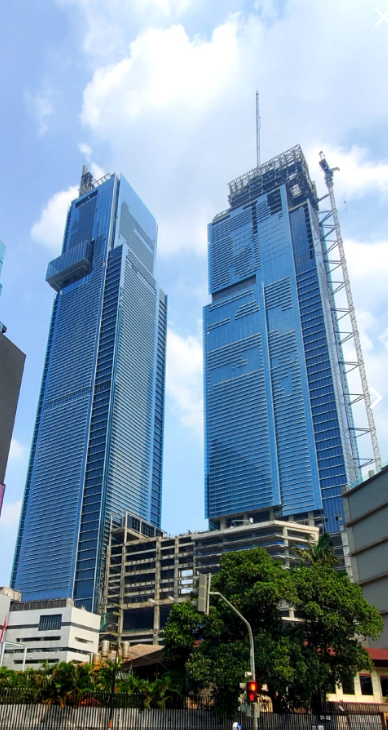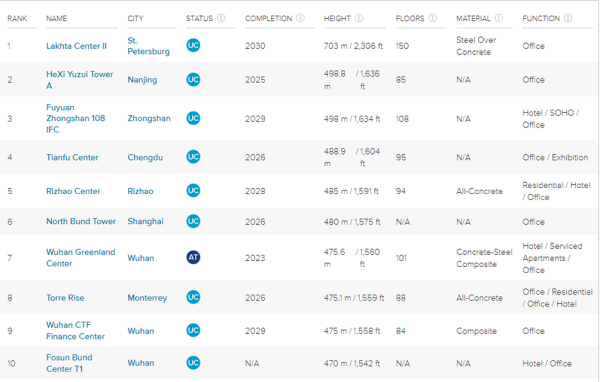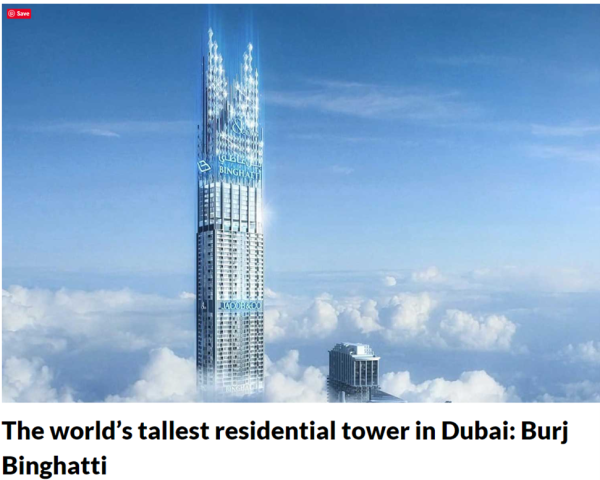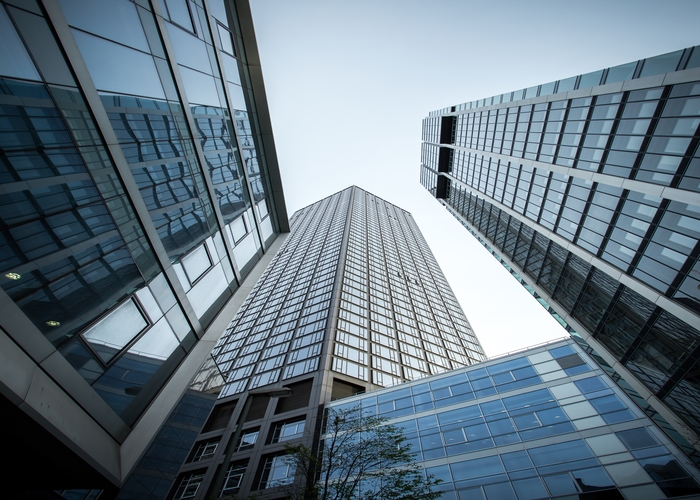The evidence continues to mount. Higher and higher.
And today, I have my team members of Property Sharemarket Economics (PSE) based in Jakarta to thank for it.
They brought this to my attention, and absolutely nailed the importance behind it too.

Source – Tansri Muliani
Thamrin Nine (so-called due to its location on Tharmin Street) is a mixed-use development complex in Jakarta, Indonesia. It covers an area of approximately 570,000 square metres with office, retail, residential, hotels, sports, and entertainment facilities.
Its centrepiece, the Autograph Tower (On the left of the above image – 382.9 m), is the tallest building in the Southern Hemisphere. The complex will have three office and apartment towers with a retail podium that connects the towers.
The entire project is slated to be completed in 2024. My work colleague Tricia said that the primary property consultants have never been busier securing tenants for those towers already built and the final one to come.
So today, it’s well past time we revisited the state of the world’s highest, biggest, and most expensive tallest buildings currently being planned or built.
If you want the best clue as to the expected highs of the upcoming peak in global land markets, and some idea of just how damaging the eventual bust will become, this remains one the best single ways to track both.
How high is high enough?
As Tricia alluded to, at this stage of the 2nd more speculative stage of the current 18.6-year Real Estate Cycle, we should have more than enough evidence of a global infrastructure construction boom.
And as this Jakarta tower is showing, it’s also time for them to become quite full of tenants as businesses continue to grow and people still have the capacity to spend big.
It’s quite bullish, not that the mainstream media would ever wish to tell you!
The problem, as it has always been for at least the last hundred years’ worth of completed real estate cycles, is when these talls are completed (what they call topped-out) right when peak turns into bust.
For now, that’s still a few years away. Today, the ability for these developers to access ever larger amounts of finance to both buy the land required to build, and then the enormous investment in commodities and workers to complete them, is a primary driver that ensures the cycle continues to turn.
And that’s the key. These buildings can’t be made without prodigious amounts of credit to finance them.
Without latent demand from commercial and residential tenants, the business case to start isn’t even present. As we can see from this Jakarta example, “if you build it, they will come”.
Then there is the expected return on investment.
As land prices continue higher, and the pressure to secure the commodities and workforce needed forces both of their costs to rise, only one solution presents itself to developers and construction companies hoping to turn a profit.
They must always continue to build higher.
Below is a list from the CTBUH (Council on Tall Buildings and Urban Habitat) website showing the top ten under construction talls as of 2023.

Source – CTBUH.
Of note, look at where they are being built, and then look at the proposed completion date.
Then also look at what the ‘function’ column says for each. I see most are dual purposed. This would be to maximize the available footprint to boost rents.
I would be watching those due for completion between 2026 and 2028.
As this aligns, should history repeat, with the expected peak of the US land markets.
Will they open empty? Time will tell.
The Cantillon effect
What we are describing today is called the Cantillon effect.
Named after economist Richard Cantillon (1680 – 1734), he proposed that a change in the supply of money and credit will affect the economy by changing prices. As credit is extended or increased an expansion in the economy would occur, however, this would ultimately be overdone as prices and imports would continue to rise eventually leading to a bust.
In plain English, it explains why it is that the tallest buildings are always built when credit is most freely available. By using credit, developers can extract the maximum profit out of a given plot of land.
Ergo. If you owned a large plot of land in the middle of a major city, would you want to build a two-storey home on it or a 100-floor high rise?!
This is why, even to this day, the simple effort of counting the tallest proposed or under construction buildings is so valuable to you.
If land prices and the availability of credit to lend against it are the foremost drivers of the real estate cycle, then these tallest buildings are the best expression of these same drivers.
So, by tracking over time the construction and eventual completion of all the world’s biggest or largest buildings, you can track the turning of the cycle almost right up to the peak.
Quite an advantage, no?
The only question now is – how does one take advantage of this information?
What type of investments should you prioritise during the years leading up to the peak? How do you best protect those same gains and keep your family safe as the peak turns into bust?
The answer is – you need to start planning for both now.
Here is where you start – with a membership to the Boom Bust Bulletin (BBB).
Give me the opportunity to take you in depth into the cycle.
Learn about the history of both the 18.6-year Real Estate Cycle and the real reasons why interest rate rises, house prices, and stock markets are so indelibly linked.
It will teach you how to decipher the news that we get bombarded with every day to focus solely on what truly matters.
No more negativity and noise, just the science of the economic rent and the timing inherent in the real estate cycle.
This is all you need to succeed.
So, start watching these tallest buildings, and make sure you are across announcements over the next few years of even higher, more extravagant, and over-the-top buildings to come.
Here’s an example of what to look for.

Source – parametric architecture
From the accompanying article.
Here is the new skyscraper project in Dubai! Binghatti, a Dubai-based property developer, has announced a collaboration with the famous jewellery brand Jacob & Co. The two firms are working together on a new project named the Burj Binghatti Jacob & Co Residences, which seeks to be the tallest residential structure in the world.
The Burj Binghatti Jacob & Co Residences will be more than 100 floors tall, located in Dubai’s Business Bay, and will feature exquisite two- and three-bedroom apartments. Although the project’s exact height has not been revealed, it is claimed to aim to beat New York’s Central Park Tower, which presently holds the world record for the tallest residential skyscraper at 472.4 meters.
You can register your interest now in this ‘hypertower’ (yes, even the marketing speech to promote these are starting to go over the top).
So, if your dream home was an amalgam of your favorite jewelry maker and the tallest residential tower in the world surrounded by desert, here you are!
No completion date has been announced, though I’d imagine the uptake for this will be fierce.
Nonetheless, you can see how by watching and correctly interpreting these types of articles through the lens of the real estate cycle you can mark where the real estate cycle is.
Then, you just need the right guidance to exploit this timing for your benefit.
That’s how the BBB can help.
As a Boom Bust Bulletin member you will receive 12 monthly editions a year detailing all the key turning points of the cycle, a deep dive into the most important markets across the globe and ways that you can personally benefit from this knowledge.
All derived from our unique and proprietary research – which you’ll not find anywhere else.
Plus, you’ll receive exclusive invites to BBB member-only webinars when we run them.
All this for just US $4 a month, less than a takeaway coffee.
Best wishes,

Darren J Wilson
and your Property Sharemarket Economics Team
P.S. – If you would like to receive weekly updates like this, sign up here.
P.P.S – Find us on Twitter here and go to our Facebook page here.
This content is not personal or general advice. If you are in doubt as to how to apply or even should be applying the content in this document to your own personal situation, we recommend you seek professional financial advice. Feel free to forward this email to any other person whom you think should read it.


